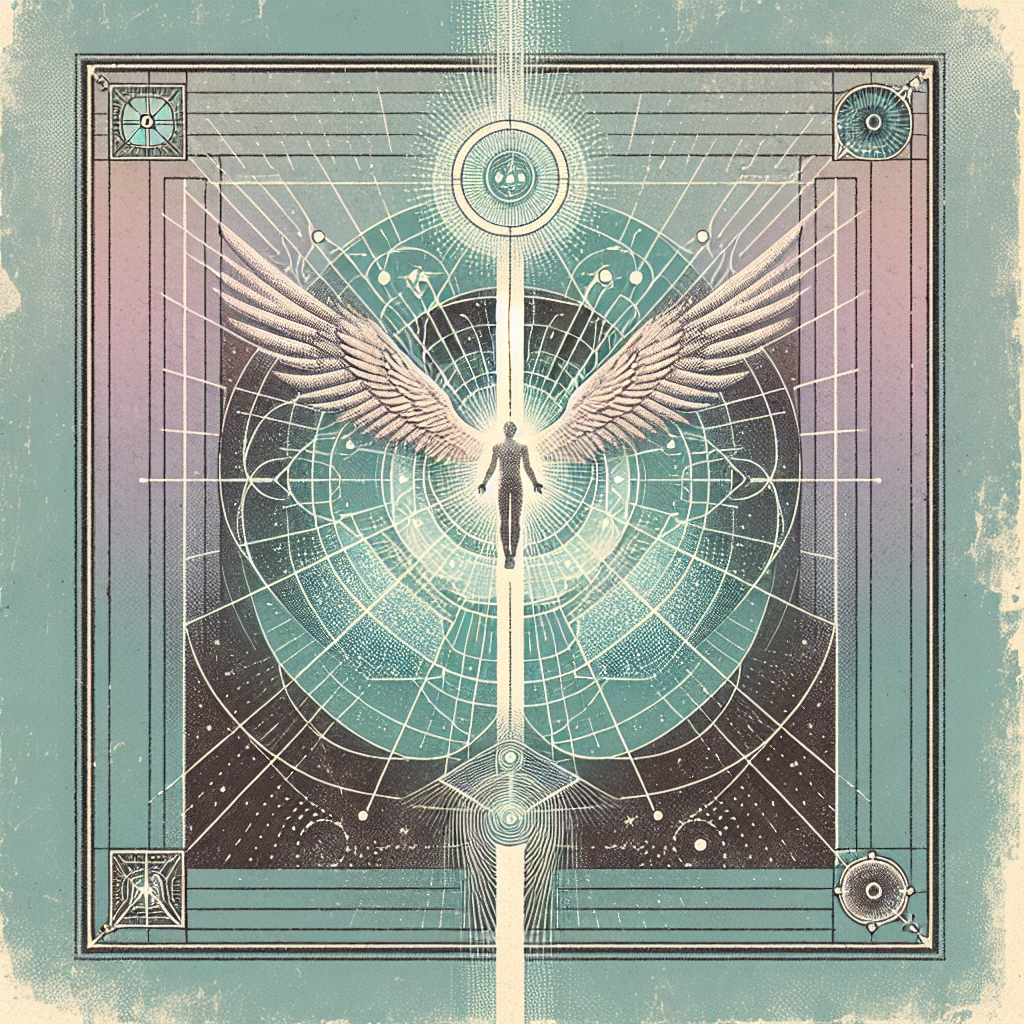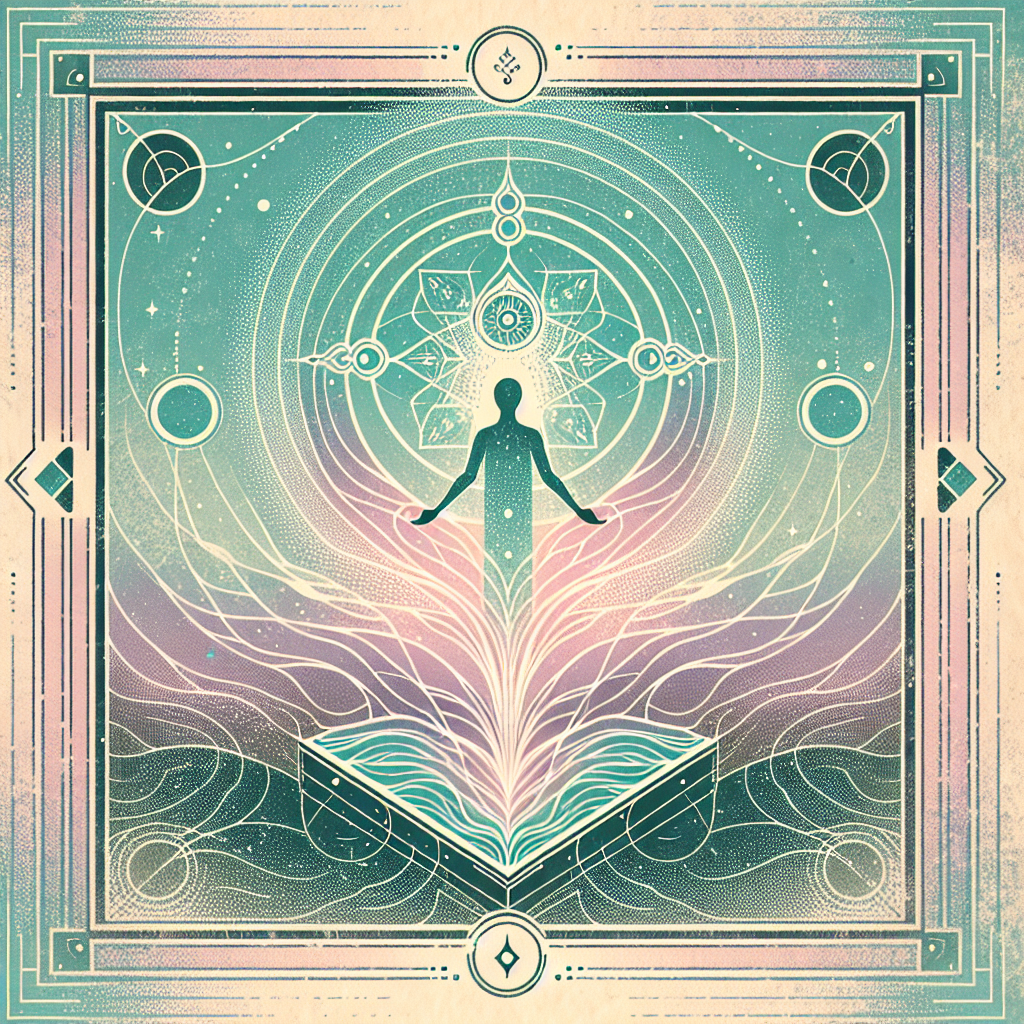
Introduction
Astral Projection—also called astral travel, and often identified with the intentional out‑of‑body experience (OBE)—is the reported sense that one’s awareness or “self” leaves the physical body to perceive from another location. In esoteric literature, this is explained by a “subtle body,” sometimes framed as a vehicle of the spirit; across South Asian sources this body is termed sūkṣma‑śarīra (सूक्ष्मशरीर) or liṅga‑śarīra (लिङ्गशरीर). Scholarly surveys of subtle‑body ideas show that concepts of a finer, intermediate vehicle of experience appear in Indian, Tibetan, and Neoplatonic traditions and have been reinterpreted in modern occult movements. These accounts describe postures, breathwork, visualizations, and the traversal of non‑ordinary spaces. They are religious‑philosophical descriptions, not scientific models. [4]
From a scientific standpoint, modern research treats Astral Projection–type experiences as varieties of out‑of‑body experiences (OBEs) and studies them as alterations of body‑self awareness. Converging evidence links spontaneous or induced OBEs to multisensory integration processes in the temporo‑parietal junction (TPJ), a brain region where visual, vestibular (balance), and somatosensory information come together to construct the feeling of “being located” in the body. [1][3]
What It Feels Like
First‑person reports of Astral Projection commonly describe a sudden shift in viewpoint—seeing one’s body from above or to the side—along with feelings of floating, lightness, or displacement. In a widely cited 2002 case from University Hospitals of Geneva and Lausanne, direct electrical stimulation of the patient’s right angular gyrus (near the TPJ) repeatedly produced sensations of “sinking into the bed,” “falling from a height,” and, at stronger currents, an out‑of‑body experience (OBE) in which she saw her own body from above. The somatic illusions ceased when stimulation stopped. [1]
Experimental setups can evoke related experiences in healthy volunteers by manipulating vision and touch. In a 2007 study, participants viewed their bodies from behind via head‑mounted displays while their backs were stroked in synchrony with what they saw on screen; many then reported feeling located outside the physical body and “looking at” themselves from that displaced vantage point. These illusions show that changes in visual perspective, combined with matched bodily cues, can shift the felt location of the self. [2]
Traditional Understanding
Religious and philosophical traditions explain such experiences—often aligned with what many today call Astral Projection—through models of an intermediate or subtle body. South Asian sources describe networks of channels (nāḍī) and centers (cakra) through which vitality (prāṇa) moves; this subtle body can, in some accounts, separate from the gross body during dreams, trance, or at death. Tibetan materials similarly articulate refined “illusory body” practices. In late antique Platonism, philosophers proposed soul “vehicles” (okhēma) that mediate between the immortal soul and the physical form. Modern occult revivals, including Theosophy and related Western esoteric currents, reworked these older schemes and popularized English terms such as “astral body” and “astral plane.” An academic overview of these lineages emphasizes that subtle‑body ideas are diverse, internally debated, and culturally situated; they are best read as theological‑philosophical explanations of embodied consciousness rather than as empirical descriptions. [4]

How People Try to Achieve It
Traditional methods described in religious and esoteric sources include disciplined meditation, breath control, mantra or visualization, ritual postures, and focused attention at specific bodily loci (for example, within chakra systems). These practices aim to refine attention, stabilize inner imagery, and cultivate awareness that can be “moved” or “extended,” often within a larger soteriological program (liberation, realization, or visionary knowledge). Scholarly treatments analyze these as culturally embedded practices of mind‑body cultivation rather than as tests of literal travel. [4]
To study Astral Projection–like states, contemporary laboratories have used other means. One approach is multisensory conflict: participants see a live video or a 3D avatar of their body from behind while their actual back is touched in synchrony, biasing the brain’s inference about “where I am.” This can induce a shifted self‑location and the sense of observing one’s own body from outside. [2] In rare clinical contexts, direct cortical stimulation during epilepsy surgery has produced OBE‑like states, suggesting that perturbations near the TPJ can alter the brain’s body‑self model. These are brief, localizable effects that end when stimulation ceases. [1]
What We Know Today
- Phenomenology: Out‑of‑body experiences (OBEs) and Astral Projection–like states present a coherent cluster of features—altered visual perspective on one’s body, feelings of elevation or displacement, and changes in agency or ownership. These features can be organized by how the brain normally binds vision, touch, proprioception, and vestibular signals into a single, stable “I am here in this body” experience. [3]
- Neural mechanisms: Case studies and reviews implicate the TPJ and adjacent right angular gyrus in constructing self‑location and body ownership. Electrical stimulation at this site has repeatedly elicited OBE‑like sensations, including whole‑body displacements and limb transformations. [1][3] Reviews argue that when multisensory integration at the TPJ is disrupted—by lesions, stimulation, or experimentally engineered conflicts—the brain can mislocalize the self, generating an OBE. [3]
- Experimental induction: Virtual‑reality paradigms demonstrate that altering visual perspective while synchronizing tactile input can shift perceived self‑location in healthy participants. These findings indicate that the sense of being situated within the physical body is not fixed; it depends on how the brain resolves multisensory evidence. [2]
- Interpretation: Scientific accounts describe “leaving the body” as a powerful, genuinely felt experience arising from specific neural computations—an out‑of‑body experience arising within the nervous system. They do not posit a separable vehicle that travels apart from the nervous system. Religious and esoteric models, by contrast, explain the same phenomenology through subtle‑body metaphysics and soteriological aims. Scholarship recommends keeping these interpretive frameworks distinct: the first is explanatory within neuroscience; the second is meaningful within religious practice and doctrine. [3][4]
- Evidence limits: Laboratory demonstrations reliably alter self‑location and perspective but do not establish perception independent of the sensory‑motor system. Conversely, subtle‑body doctrines organize practice and meaning but are not designed for falsification in laboratory terms. Current peer‑reviewed evidence supports a neurocognitive model of OBEs centered on multisensory integration at the TPJ; whether some experiences also involve non‑ordinary perception remains a metaphysical question outside the scope of existing methods. [1][2][3]
In Sum
In sum, Astral Projection names a widely reported human experience whose meaning is interpreted differently across domains. Neuroscience links the core features to how the brain builds a body‑centered self; religious and esoteric traditions embed the experience within cosmologies of subtle embodiment and spiritual ascent, often pointing toward transcendence. Understanding both registers—without conflating them—best reflects what we can responsibly say today. Holding both perspectives side by side invites careful connection and open‑minded change while staying faithful to the evidence. [1][2][3][4]
Sources
[1] Blanke, O., Ortigue, S., Landis, T., & Seeck, M. Stimulating illusory own‑body perceptions. Nature, 2002. Brief case study showing OBE induction by right angular gyrus stimulation; foundational for TPJ models. https://doi.org/10.1038/419269a
[2] Ehrsson, H. H. The Experimental Induction of Out‑of‑Body Experiences. Science, 2007. Demonstrates shifted self‑location via synchronized visuo‑tactile input and altered perspective in VR. https://www.science.org/doi/10.1126/science.1142175
[3] Blanke, O., & Arzy, S. The Out‑of‑Body Experience: Disturbed Self‑Processing at the Temporo‑Parietal Junction. The Neuroscientist, 2005. Peer‑reviewed review arguing OBEs arise from multisensory disintegration at the TPJ. https://journals.sagepub.com/doi/10.1177/1073858404270885
[4] Samuel, G., & Johnston, J. (eds.). Religion and the Subtle Body in Asia and the West: Between Mind and Body. Routledge, 2013. Academic anthology mapping subtle‑body doctrines and practices across cultures. https://www.routledge.com/Religion-and-the-Subtle-Body-in-Asia-and-the-West-Between-Mind-and-Body/Samuel-Johnston/p/book/9781138119376